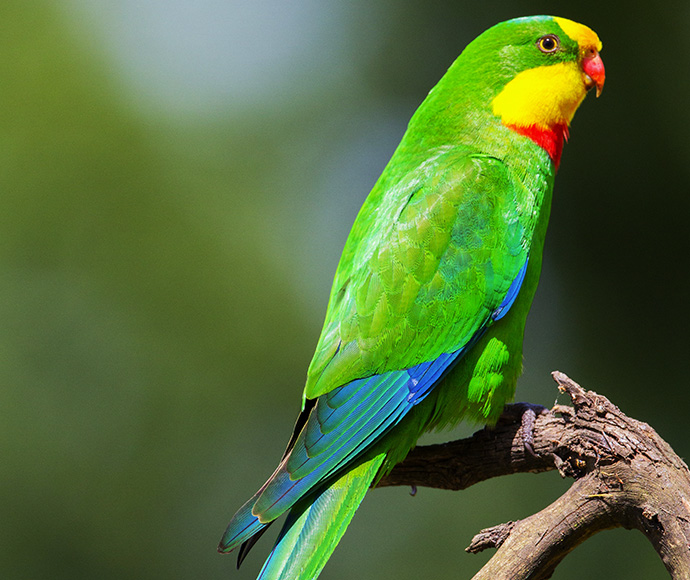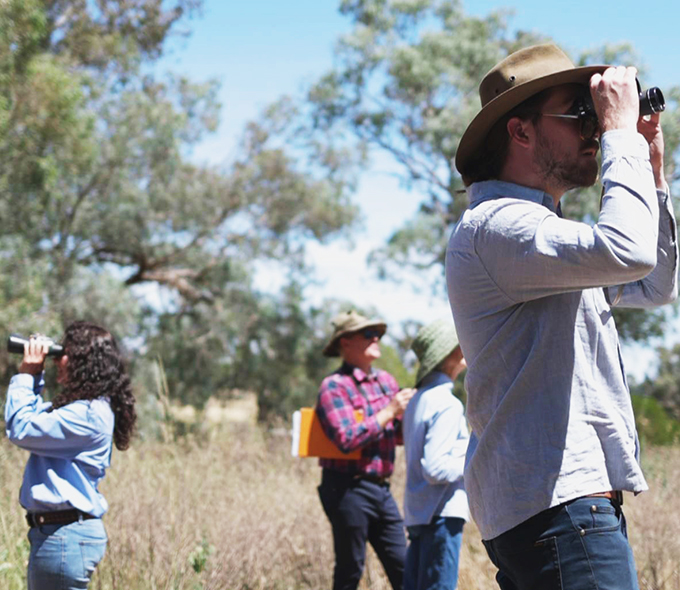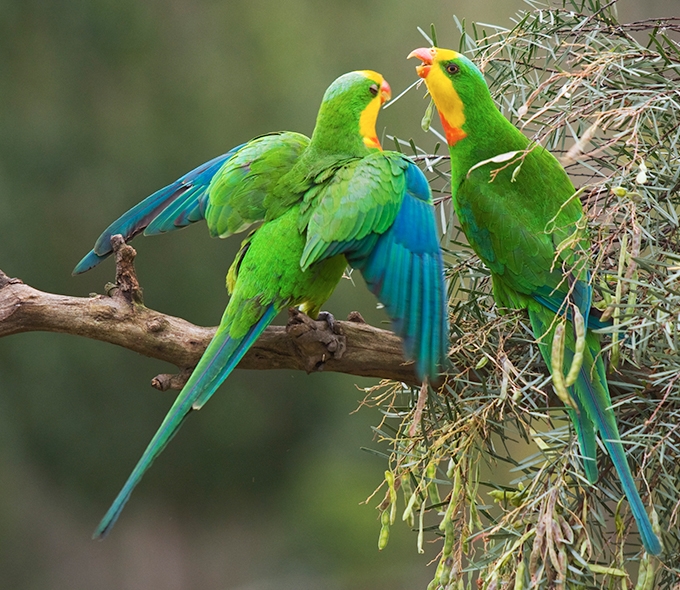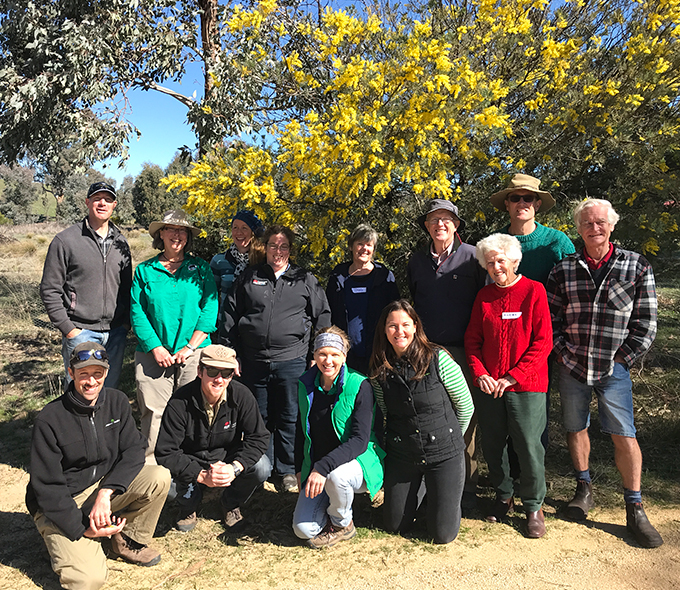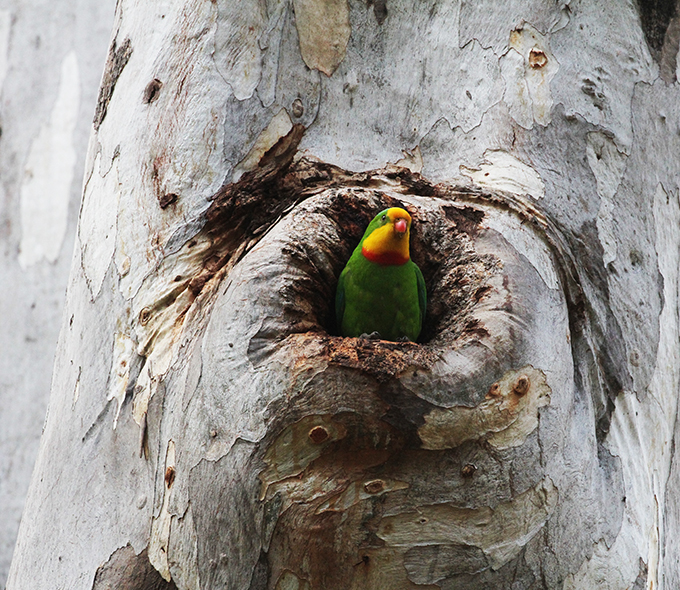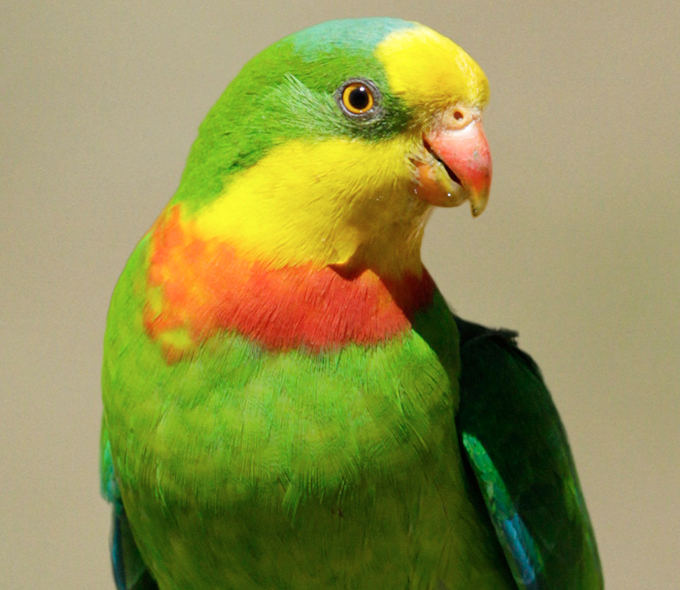The superb parrot (Polytelis swainsonii) is a bright green parrot that is at risk of extinction. It needs large trees with hollows to nest and breed, but many of these trees have been cleared or cut down for firewood.
We don't know enough about how many superb parrots are left, where they go and what they need to survive. That's why we need your help.
As a citizen scientist, you can record and submit your sightings of superb parrots. You can also do a transect walk and count how many birds you see along a one-kilometre line.
Your data will help us understand the population trends, distribution and movement patterns of this species. This will inform our conservation and management actions.
You can help save the superb parrot by registering as a citizen scientist. Every sighting counts.
Help save the superb parrot
How to get involved
Follow these steps to join the superb parrot citizen science project:
- Register as a contributor to the Atlas of Living Australia. This will allow you to track your own records and access the superb parrot monitoring data collection tool.
- Choose whether you want to record a single sighting or do a superb parrot transect:
- Single sightings are recording single sites where you see the birds and some simple information about how many males and females there were, what type of habitat they were in and what they were doing.
- Transects are walking a one-kilometre transect and recording how many birds you see 250 metres either side of that line in a one-hour period. Add the extra habitat and ecological information for each of these sightings. It is also important to note if you saw no superb parrots during the transect.
- Go outside and see if you can (or cannot) see any superb parrots.
- Record your survey data online in the Atlas of Living Australia or on paper using the survey sheet (PDF 273KB). If you use paper, you can scan and email or post your survey sheets to us:
Ecosystems and Threatened Species, South East
NSW Department of Climate Change, Energy, the Environment and Water
PO Box 733
Queanbeyan NSW 2620
For more details on how to survey and record your data, see the Superb Parrot Monitoring Project page.
When and where to survey
You can survey for superb parrots at any time of the year. But spring and summer are the best seasons to see them on the NSW South West Slopes and Southern Tablelands.
The superb parrot is found in eastern inland New South Wales. There are 2 different populations:
- The South West Slopes and Southern Tablelands population breeds in these areas in spring and summer. Then it migrates north to the North Western Slopes and plains in winter.
- The Riverina population stays near the river red gum forests, where it breeds in spring and summer. Then it moves to the woodlands and shrublands of the plains and Riverina watercourses in autumn and winter.
The map below shows the approximate boundary of where the 2 populations breed and where the South West Slopes and Southern Tablelands population spends the non-breeding season.
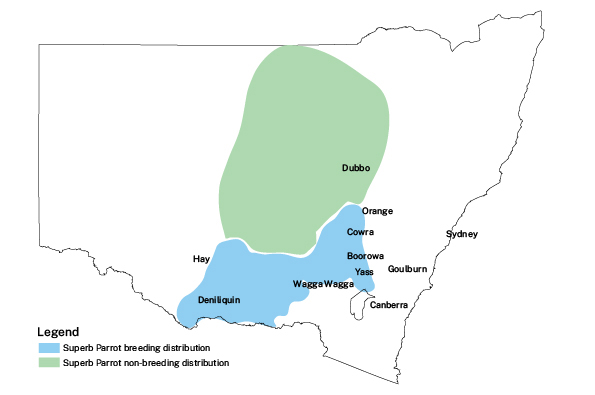
Map showing superb parrot breeding and non-breeding distribution
We are always interested in sightings from anywhere and anytime. We especially want to know more about the superb parrots' movements during autumn and winter.
How to identify a superb parrot
The superb parrot is a distinctive, streamlined, bright green parrot, about the size of a rosella but with a longer tail.
- Males have yellow foreheads and throats and a red crescent that separates the throat from the green breast and belly.
- Females are slightly duller green and have a light blue wash in place of the males' red and yellow markings.
- Juveniles look like adult females, but with a paler bill.
Adults measure around 40 cm from beak to tail. In flight, the superb parrot has a long, narrow tail and sharply back-angled wings. Its flight is swift and graceful.
The superb parrot can fly alone, in pairs, or in flocks of up to 50 birds.
Other ways to help save the superb parrot
There are lots of ways you can help contribute to the survival of the superb parrot:
- Retain and protect hollow-bearing trees, including live and dead isolated paddock trees.
- Retain and protect woodland remnants.
- Enhance foraging opportunities in woodland remnants by direct seeding or planting native shrubs and grasses.
- Report suspected illegal firewood harvesting, illegal bird trapping, egg collection or sales to the Environment Line on 131 555.
- Slow down if you see superb parrots on the road (they are often feeding on spilt grain and then get hit by vehicles).
- Cover grain trucks and check all openings are properly sealed.
- Report grain spills to local authorities so they can be cleaned up and warning signs erected to warn motorists.
Learn more about the Saving our Superb Parrot project
Since 2018, the Saving our Superb Parrot project has protected and restored habitat across the NSW South West Slopes and Southern Tablelands. The project has provided funding and worked with the community on public and private land to:
- plant more than 4,250 new trees, most with steel mesh stock guards
- protect more than 60 mature paddock trees
- fence and reserve more than 300 hectares of remnant vegetation for habitat.
Learn more about the Saving our Superb Parrot project and how to get involved by visiting the Facebook page.
Saving our Superb Parrot is a partnership project between Landcare groups across the South West Slopes, Greening Australia, Cowra Woodland Birds and the NSW Government's Saving our Species program.
More information
- Atlas of Living Australia – superb parrot profileopens a new window
- Australian Government – superb parrot profileopens a new window
- Saving our threatened woodland birds
- Superb parrot threatened species profileopens a new window
- Superb parrot (Polytelis swainsonii) fact sheet
- Superb parrot – 5-year summary
- Trees with hollowsopens a new window
Contact us
Saving our Species Program
Email: [email protected]
Stay in touch
- Subscribe to the Saving our Species newsletter.
- Follow us on Facebook, Instagram, YouTube, LinkedIn or X.
- Search the Public register of Saving our Species conservation strategies
